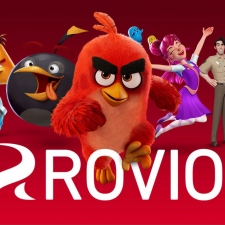If there’s anything Rovio - creators of Angry Birds - could be praised for it’s simple but effective level design.
And if you were interested in finding out just how the multi-million dollar mobile developer, soon to be owned by Sega, does it, then you’re in luck. Rovio’s latest blog post goes into detail about the purpose and approach behind their level design, written by lead designer on Moomin: Puzzle and Design and Angry Birds Pop Blast, Matti Delahay.
Delahay starts off by defining the simple nature of a level, whether those by 3D representations of living places or the abstraction of a game board. “While different in their form and rules, they’re all arrangements of individual pieces and mechanics into a fun experience with just the right balance of challenge and luck, familiar and new. In short, they’re the glue that holds everything else together and binds into the experience you get when you start playing,” he explained.
Delahay goes on to explain the work that goes into creating these levels. While some laymen may think of them more like set-dressing he elaborates on how they form the right experience for players and change during progression. He also elaborates on how factors outside of the level design itself can affect how that level is played, specifically by one of Rovio’s other specialities - live events.
Livewire
“A live event that challenges the players to beat levels on the first try completely changes the experience without any change in the levels themselves,” he says. Delahay also notes that, not only are levels not simply background, but that the work which goes into them requires an entire team to design and create.
Delahay points to all the work that goes into the planning behind levels and the preliminary work before even programming the final look. “This involves a lot of brainstorming, planning and close cooperation with experts of other fields, including programmers, artists, animators, game designers, user experience designers and the audio team to name a few.”
Finger on the pulse
But it’s not just the initial design that forms a major focus for designers like Delahay. Especially with constantly updated and changing titles like Angry Birds, studying player reception is vitally important. “The worst offenders we usually catch in our playtesting phase, but every now and then we find ourselves in the situation where the players are having a bad experience with a section of the game.”
But unlike some analytics it’s not as simple as tinkering and changing. As Delahay notes it’s the final say of the level designer as to interpreting the data, figuring out where things have gone wrong - or sometimes just why an idea which seems good on paper doesn’t resonate with audiences. In many ways this constant litmus testing is a never-ending battle to keep players engaged with the core of the title.
Summing up
So what’s the key reasoning behind good level design? Well if it wasn’t clear already it’s all based around creating an excellent player experience, something that Rovio has managed to do well if their continued success is any indication. More than that, it’s not something that is a one-and-done job, but requires constant monitoring - especially for titles with exceptionally long life-cycles like Angry Birds and its spin-offs.
“While levels are just one part of what makes a fun and successful game, disregarding levels can certainly ruin an otherwise promising game. A puzzle game with incredible potential will find it very hard to satisfy the players if the puzzles themselves are not presented in a fun, engaging and easily understandable form. It’s only when the different parts play smoothly together that we can really serve our players the best possible experience,” Delahay says.
Consider why more people play video games than board games, or why Hollywood blockbusters are more popular than arthouse. In some ways it’s not poor design at all, but simply a difference in audience. One of the key challenges in mobile gaming is managing audiences and delivering entertainment that meets their expectations via great levels designed to get a positive reaction.






















